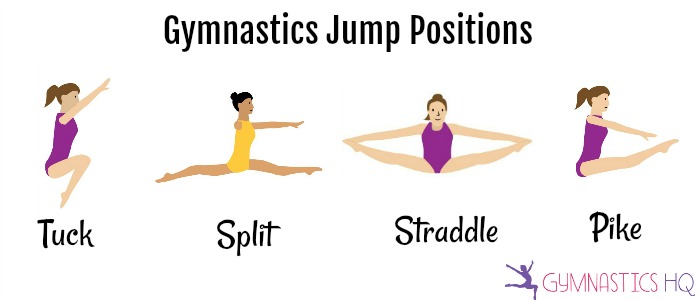

(Open for Registration!)Īt this level gymnasts are able to follow directions more easily and are able to learn more advanced motor skills and gymnastics skills. Bell Swing on bar (hands and feet on bar).Front support on single bar and parallel bars.Jumping feet apart and together (straddle).This class develops the skills featured in the parent participation classes, in addition to introducing more challenging ones. If you really want to change your lifestyle and become more active, you must seek motivation within. Our primary objectives for this group are following the teacher’s instructions, taking turns, and playing well with others within the gymnastics setting. You can start with these basic moves and then later move on to some advanced gymnastics moves. To make this transition as smooth as possible, our student teacher ratio is 6:1 for this class. (Currently not offering Tiny Tots Classes)įor many of our gymnasts, this is their first class experience without a parent. Our preschool classes end with a fun and challenging closing activity, like parachute, rhythmic ribbons or trampoline. Each obstacle course provides a variety of motor skills exercises and gymnastics skills for the class to work through and master.
Basic gymnastic moves series#
Once their muscles are warm, the instructors assist their classes through a series of obstacle courses. Here our gymnasts learn the gymnastics positions, follow the instructor’s specific directions, and stretch their muscles through a series of theme-related games. Some blogs suggest that skills like the back walkover are beginner gymnastic skills, but we think that’s a little ambitious. Following the opening activity, our instructors lead the class into “circle time” for some focused gymnastics instruction. Resources Learning beginner gymnastics skills is about establishing a strong foundation for more advanced movements later on. Our staff, skilled in both gymnastics and child development, begins each class with an opening activity designed to facilitate participation and creative movement. Classes are structured, but not rigid so that children can channel their physical energy while learning to socialize with other students in a safe and fun environment.ĪGC’s preschool gymnastics classes feature weekly themes to stimulate imaginative play and exercise. The preschool program is designed to encourage whole body exercise, including development in strength, flexibility, and coordination. gymnastics, learning more complex moves on artistic apparatus. It can seriously impact a wide range of gymnastic skills such as handstands, somersaults, and other basic moves. The more comfortable you get, the more mobile your handstand is.As an introduction to gymnastics, AGC offers a range of special motor skills classes with a clear emphasis on the joy of movement. In these classes, children learn simple gymnastic actions and safe movement. Another option is to dismount in a cartwheel-like motion. Stay close to the wall so you can put your feet back if you feel unstable. This is mainly because many gymnasts have to do the skill starting from level 4 going on through level 8. Performing a front handspring on a vault is essential in the sport of gymnastics. When you’re comfortable lifting one leg at a time into the handstand position, work towards extending both legs straight into the air. Splits are basic gymnastics moves that you have to do perfectly to do other techniques correctly.


Once you get to where you can make a 90-degree angle with your body you can start to practice lifting one leg off the wall at a time to mimic a handstand position. Some of the easier gymnastics moves that beginners can do are handstands, cartwheels, backbends, walkovers, splits, both forward and backward rolls, tuck jumps. Basic skills such as forward rolls, handstands, and cartwheels are some of the foundational gymnastic skills you first learn in classes. Put your feet on the base of the wall behind you and slowly start walking them up the wall. Your hands should be shoulder-width apart with your fingers spread evenly. Starting with a wall, sit on the floor facing away from the wall and place your hands on the ground in front of you. Many gymnasts start by leaning on a vertical surface, usually walls, to get comfortable with the upside-down position.
Basic gymnastic moves how to#
Enjoy How to teach a Forward Roll How to teach a Backward Roll How to teach a Log Roll How to. That’s why this is another gymnastics move that has levels. Below the skill list are some of our activities for fun. Handstandįor some, handstands might seem scary. Simply put, learning basic gymnastics moves for beginners is all about establishing a solid foundation and building core strength.


 0 kommentar(er)
0 kommentar(er)
